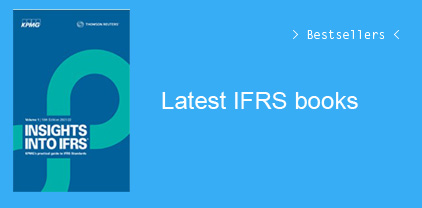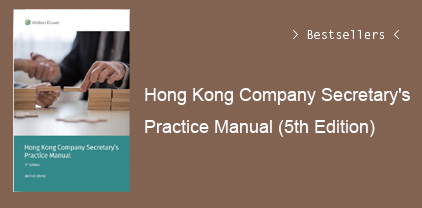Preface xiii
Acknowledgments xix
Chapter 1: The History and Evolution of Fair Value Accounting 1
Why the Trend Toward Fair Value Accounting? 2
History and Evolution of Fair Value 5
Fair Value Accounting and the Economic Crisis 12
The FASB and IASB Convergence Project 17
The Future of Fair Value Measurement 23
Fair Value Quality Initiative for Valuation Specialists 24
Conclusion 26
Notes 26
Appendix 1A: The Mandatory Performance Framework 31
Performance Requirements 31
Conclusion 33
Notes 46
Chapter 2: Fair Value Measurement Standards and Concepts 47
FASB ASC 820, Fair Value Measurement 48
Disclosures 67
Fair Value Option 70
Standards in the Valuation Profession and Fair Value Measurements 77
Conclusion 79
Notes 80
Appendix 2A: Taxes and Fair Value Measurements 81
Summary of Changes under 2017 TCJA 81
Chapter 3: Business Combinations 85
Mergers and Acquisitions 86
Accounting Standards for Business Combinations—A Brief History 88
ASC 805, Business Combinations 90
Other Business Combination Highlights 95
Subsequent Accounting for Goodwill and Other Intangible Assets 99
Conclusion 100
Notes 101
Chapter 4: The Nature of Goodwill and Intangible Assets 103
History of Intangible Assets 104
Intellectual Property 105
Economic Basis of Intangible Assets 106
Identification of Intangible Assets 106
Useful Life of an Intangible Asset 111
Intangible Assets and Economic Risk 112
Goodwill 112
Economic Balance Sheet 114
Conclusion 116
Notes 117
Chapter 5: Impairment 119
Evolution of Impairment Testing 120
Applicable FASB Guidance for Impairment Testing 122
Accounting for the Impairment of Long-Lived Assets 123
Goodwill Impairment Testing—Public Companies 125
Goodwill Impairment—One-Step Impairment Loss 138
Testing Other Indefinite-Lived Intangible Assets for Impairment 139
Amortization of Goodwill 139
Conclusion 140
Notes 140
Appendix 5A: Example of a Qualitative Impairment Analysis—PlanTrust, Inc. 143
Financial Accounting Standards Board ASC 350, Intangibles—Goodwill and Other 143
PlanTrust, Inc. 144
Notes 159
Chapter 6: The Cost Approach 161
The Cost Approach under FASB ASC 820, Fair Value Measurement 162
Economic Foundation for the Cost Approach 164
Cost versus Price versus Fair Value 164
The Role of Expected Economic Benefits in the Cost Approach 166
Reproduction Cost versus Replacement Cost 167
Components of Cost 168
Obsolescence 169
The Relationships Among Cost, Obsolescence, and Value 170
Physical Deterioration 171
Functional (Technological) Obsolescence 172
Economic (External) Obsolescence 173
Applying the Cost Approach 174
Taxes Under the Cost Approach 178
Limitations of the Cost Approach 179
Conclusion 179
Notes 180
Chapter 7: The Market Approach 183
Applying the Market Approach When Measuring the Fair Value of an Entity or a Reporting Unit of an Entity 184
Conclusion 213
Notes 213
Chapter 8: The Income Approach 215
Introduction 215
Discounted Cash Flow Method 216
Multiperiod Excess Earnings Method 223
FASB Concepts Statement 7 239
Rates of Return Under the Income Approach 244
The Income Increment/Cost Decrement Method 245
Profit Split Method 246
Build-Out, or Greenfield, Method 251
Weighted Average Cost of Capital Calculation 251
Conclusion 258
Notes 259
Chapter 9: Advanced Valuation Methods for Measuring the Fair Value of Intangible Assets 261
Introduction 261
Limitations of Traditional Valuation Methods 261
Real Options 263
Using Option Pricing Methodologies to Value Intangible Assets 266
Black-Scholes Option Pricing Model 269
Binomial or Lattice Models 272
Monte Carlo Simulation 277
Decision Tree Analysis 280
Conclusion 281
Notes 281
Chapter 10: Measuring the Remaining Useful Life of Intangible Assets in Financial Reporting 283
FASB Guidance on Determining the Remaining Useful Life 283
Considerations in Measuring Useful Lives of Intangible Assets 285
Practical Guidance for Estimating and Modeling the Useful Life 289
Conclusion 295
Notes 295
Chapter 11: Fair Value Measurement for Alternative Investments 297
Introduction 297
Investments in Certain Entities That Calculated Net Asset Value per Share 299
AICPA Technical Practice Aid 300
AICPA Guidance for Determining the Fair Value of Investment 301
AICPA Accounting and Valuation Guide, Valuation of Portfolio Company Investments of Venture Capital and Private Equity Funds and Other Investment Companies 305
International Private Equity and Venture Capital Valuation Guidelines 306
Common Valuation Methodologies of Measuring the Fair Value of the Fund’s Investment Portfolio 307
Conclusion 308
Notes 308
Chapter 12: Contingent Consideration 311
Contingent Consideration: Earn-outs in Business Combinations 311
Accounting for Contingent Consideration 312
Conclusion 324
Notes 324
Appendix 12A: Measuring the Fair Value of a Nonfinancial Contingent Liability—Example of a Loan Guarantee 327
The Jordan Lee Fund Guarantee of Townsend Farm Development, LLC 328
Notes 334
Chapter 13: Auditing Fair Value Measurement 335
Auditing Standards 336
The Audit Process 338
Evolution of Audit Standards for Fair Value Measurements and Disclosures 342
Auditing Standard 2501, Auditing Accounting Estimates, Including Fair Value Measurements 344
Auditing Standards for Auditor’s Use of the Work of Specialists 349
Proposed International Standard on Quality Management 1 354
Practical Guidance for Auditors 354
PCAOB Staff Audit Practice Alert No. 9, Assessing and Responding to Risk in the Current Economic Environment 356
AICPA Nonauthoritative Guidance 358
The Appraisal Foundation 359
Conclusion 359
Notes 360
Appendix 13A: Auditing Fair Value Measurement in a Business Combination 363
Auditor Questions 363
General 363
Income Approach 364
Cost Approach 366
Market Approach—General 367
Appendix 13B: Auditing Fair Value Measurement in a Goodwill Impairment Test 369
General 369
Income Approach 370
WACC 371
The Market Approach 372
Chapter 14: Fair Value Measurement Case Study 373
Learning Objectives 373
Business Background and Facts—Dynamic Analytic Systems, Inc. 374
Notes 406
Appendix 14A: Suggested Case Study Solutions 407
Note 437
Appendix 14B: Model Fair Value Measurements Curriculum 439
Acknowledgments 439
AICPA Staff 440
About Us 440
Preface 440
Model Fair Value Measurement Curriculum 440
Appendices and Examples 448
Note 451
Glossary of International Business Valuation Terms 453
Bibliography 463
About the Author 475
Index 477


































